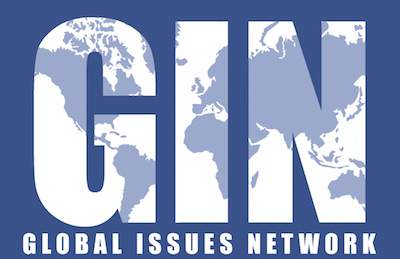Excerpt From: Rischard, Jean-Francois.
“High Noon: 20 Global Problems, 20 Years To Solve Them.” iBooks.
“Biotechnology rules, not even a topic twenty years ago, have been made a pressing global issue by the spectacular explosion of discoveries in recent years. Yet biotechnology is still in its infancy, so far bringing up many more questions and possibilities than answers and outcomes. You can already sense, however, that this is an area where some sort of minimum critical mass of global rules will be needed—even if these rules aren’t too clear yet.
Several areas come to mind. They all spring from the basic advances scientists have made in decrypting the basic code of life—DNA, RNA, and the proteins they trigger—in a revolution revealing that all living organisms are information-processing machines. But they have very different features. Here are three such areas:
Transgenic plants and animals. Plant and animal breeding or hybridization to achieve desired features, a slow process, is very old. What’s new is the direct manipulation of their genetics, which goes faster and much further. Farmers now plant some 50 million hectares a year with such genetically modified crops as soybeans, corn, cotton, and canola—98 percent in the United States, Canada, and Argentina, and the rest in more than ten countries. Three of every four hectares are devoted to crops engineered to withstand spraying of weed killers, the rest to crops modified to produce their own insecticides or to have some other feature. Some of these features could be very attractive: drought- and flood-resistant grass peas in Bangladesh are being modified so that they are no longer toxic when eaten in large amounts during famines; some plants are being modified to grow on lands with a high salt content. Transgenic plants, animals, and bacteria that produce raw materials (like plastics or tough silk proteins) and clean up polluted sites are beginning to be developed; some modified organisms could even feed on natural gas. Other genetically modified animals include salmon that grow faster and bigger.
Stem cell and other cloning applications. As the undifferentiated cells from which other, more specialized cells arise, “stem cells” can be collected from embryos, fetuses, umbilical cords, or even adults, and—when given the right biochemical push—made to develop into various sorts of adult cell types. This technology, which can involve so-called therapeutic cloning, could be used to produce such things as virus-free blood supplies in unlimited quantities, dopamine-producing cells for Parkinson’s sufferers, and made-to-measure cell replacements that won’t be rejected by the patient. The variations around the theme are endless and awesome. Some applications, of the reproductive cloning variety, are straight out of a Frankenstein movie.
Revolutionizing the treatment of diseases through detailed genome knowledge. The deciphering at the very end of the last century of the human genome, with its 30,000 genes, turns out to be just a first step. Much of life’s variety and complexity revolves not around DNA and RNA but around the mysterious interplay of the proteins they trigger. Yet the mere possibilities brought forth by genome knowledge are mind-blowing: more accurate diagnoses; drugs that work the first time and have no side effects; predictive medicine that can alert you ahead of time to what diseases you are at risk for; the ability to predict a virus’s virulence from its genetic structure. Similar benefits of genome knowledge will accrue for domesticated animals as well.
Why would one need rules? For several reasons:
Moral reasons. Some of the applications, such as those that involve the destruction of embryos for the embryonic variety of stem cells, clash with strongly held moral and religious principles. That conflict led the U.S. government in 2001 to severely limit research on them. Other governments feel equally queasy.
Threats to ecosystems and other species. Like the hybrid varieties that have helped increase food supply as population grew, transgenic plants have a key role to play in helping the world feed itself in the decades to come. Yet they entail special risks: for instance, they could cross-pollinate with their wild relatives in highly damaging ways. Insect-resistant plants could wipe out important insects. Sexy-looking but sterile modified salmons could escape and thwart the reproduction of their wild brethren. People have even developed allergies to a modified variety of corn in late 2000—easily handled, but a warning.
Social risks. Genome knowledge could create hitherto unknown and hard-to-manage tensions. People’s genetic databases could show up in many places—voluntarily in medical databases, not-so-voluntarily in legal databases or even in private databases assembled outside their knowledge. Such databases could be abused to deny life or medical insurance, influence recruitment decisions, track real parenthood ties against people’s wishes, or even create, as a British libertarian put it, a “nation of suspects.”
Anyone who argues that no rules whatsoever are required is a fool. Even arguing that nation-state rules are sufficient is an uphill task: from the few examples and risks just listed, it is clear that this is an area where some minimal body of global rules, if only provisional ones, is a must. Cross-pollination and similar risks cannot be contained inside borders, and it is in everyone’s interest that testing be done first, under safety conditions for which there is a global standard. Another reason for global action: what point is there in limiting embryonic stem cell research in the United States if there are no such rules elsewhere? Already, some U.S. companies are contemplating moving to the United Kingdom.6 And what good is it for the United Kingdom or Sweden, say, to forbid involuntary inclusions of people’s genetic data in private databases, when these databases may be available in cyber-space or you can send a skin flake to have a test done across the border?”
